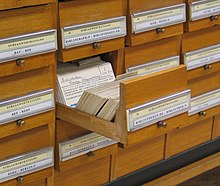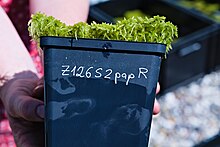Metadata
Metadata sī chí koan-hē bó͘ hāng data (chu-liāu, sò͘-kì) ê data, pau-koat ū kì-sū-sèng, kò͘-chō-sèng kap koán-lí-sèng téng khoán.
- Kì-sū-sèng ê metadata sī chí chi̍t hāng chu-liāu hông kì-jīn ê i-kù, pí-lūn tê-bo̍k, khài-iāu, chok-chiá, kap keyword téng khoán hāng-bo̍k.
- Kò͘-chō-sèng ê metadata sī chí chi̍t hāng chu-liāu pún sin lōe-iông ê kò͘-chō, pí-lūn ia̍h-bīn ê pâi-lia̍t.
- Koán-lí-sèng ê metadata sī chí thang pang-chān koán-lí ê chu-liāu, pí-lūn kiàn-li̍p ê hong-sek, tóng-àn ê lūi-hêng kap kî-tha ki-su̍t sū-hāng.



| Pún bûn-chiuⁿ sī chi̍t phiⁿ phí-á-kiáⁿ. Lí thang tàu khok-chhiong lâi pang-chō͘ Wikipedia. |